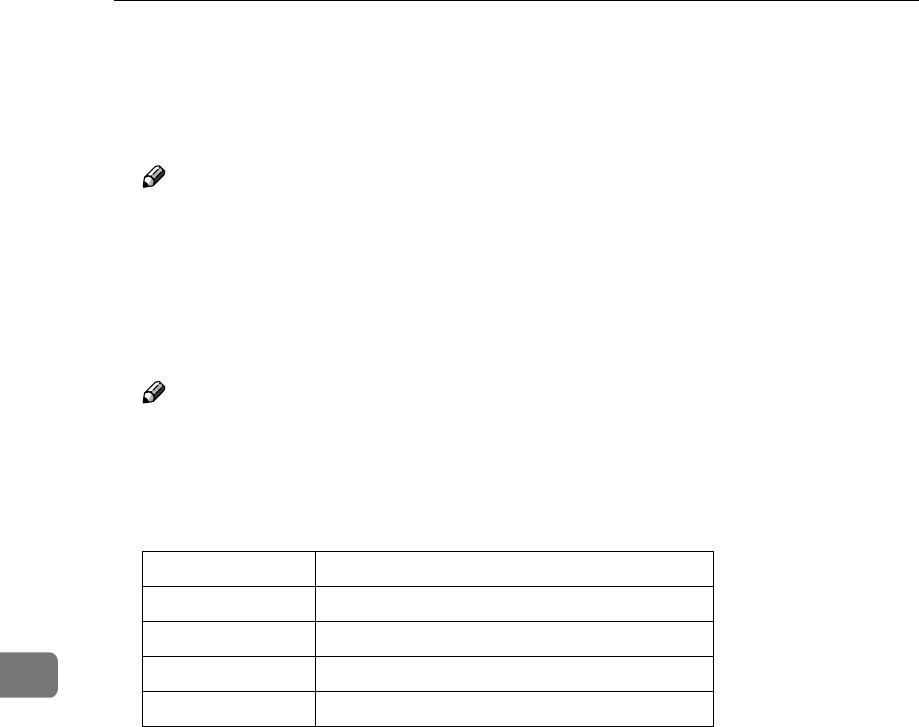
Appendix
98
7
❖
❖❖
❖ Display
Shows the SNMP information and available protocols.
msh> snmp ?
msh> snmp [-p] [registered_number]
Note
❒ If the -p option is added, you can view the settings one by one.
❒ Omitting the number displays all access settings.
❖
❖❖
❖ Community name configuration
You can set the community name of the registered number.
msh> snmp number name community_name
Note
❒ The community name must consist of 15 characters or less.
❖
❖❖
❖ Access type configuration
You can select the access type from those listed below.
msh> snmp number type access_type
❖
❖❖
❖ Protocol configuration
You should use the following command to set the protocols to active or inac-
tive. If you set a protocol to inactive, all access settings set to use that protocol
will be disabled.
msh> snmp {ip | ipx} {on | off}
• “on” means active and “off” means inactive
To change the protocol of an access settings, use the following command.
However, if you disabled a protocol with the above command, making it ac-
tive here will have no effect.
msh> snmp number active {ip | ipx} {on | off}
❖
❖❖
❖ Access configuration
You can configure the address of a host depending on the protocols used.
The Network Interface Board accepts requests only from hosts having ad-
dresses with access types of “read-only” or “read-write”. Type “0” to have the
Network Interface Board accept requests from any host without requiring a
specific type of access.
Command syntax:
msh> snmp number {ip | ipx} address
Access type Type of access which is permitted
read Read only
write Read and write
trap User is notified of trap messages.
no All access is denied.


















